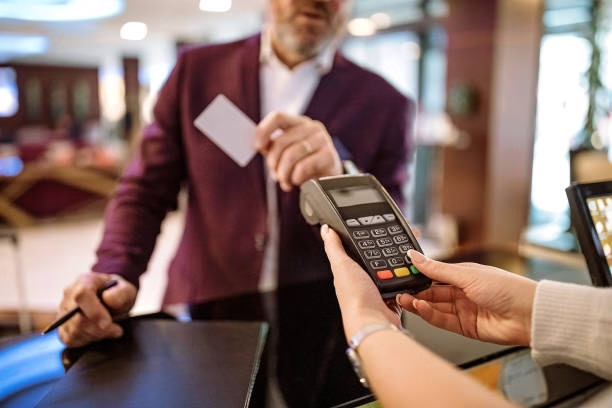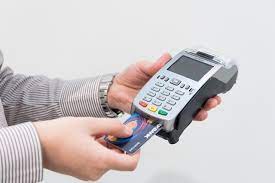1. Introduction
Experiential marketing has evolved as brands strive to create meaningful connections with their audiences. Amid this evolution, technology—particularly NFC (Near Field Communication)—has emerged as a powerful tool. NFC business cards are not just modern replacements for traditional business cards; they serve as dynamic tools to enhance experiential marketing strategies.
This article explores how NFC business cards improve experiential marketing efforts, blending innovative technology with unforgettable customer experiences.
2. Understanding NFC Technology
2.1 What Are NFC Business Cards?
NFC business cards are physical cards embedded with a small chip that enables wireless communication when tapped on a compatible device, such as a smartphone. Unlike traditional paper cards, these high-tech alternatives can store dynamic digital information such as contact details, website links, or promotional content.
2.2 How NFC Technology Works
NFC operates using short-range wireless communication technology. When an NFC-enabled device comes within a few centimeters of the card, it instantly reads and transfers the stored information. This frictionless interaction is what makes NFC business cards a game-changer in modern marketing.
3. The Importance of Experiential Marketing
3.1 Defining Experiential Marketing
Experiential marketing focuses on creating memorable, interactive experiences that allow consumers to engage directly with a brand. The goal is to leave a lasting impression, making the brand more relatable and trustworthy.
3.2 The Role of Technology in Experiential Marketing
Technology bridges the gap between brands and consumers by offering personalized and immersive experiences. Tools like NFC business cards streamline interactions and add a layer of innovation to experiential marketing efforts.
4. Benefits of NFC Business Cards in Experiential Marketing
4.1 Instant Information Sharing
NFC business cards allow marketers to share information effortlessly. By simply tapping the card on a device, users can access:
- Contact details
- Social media profiles
- Event registration pages
- Exclusive offers
This eliminates the hassle of manual data entry, improving user experience.
4.2 Personalized Interactions
These cards can be customized to deliver tailored content based on the context. For example:
- Event attendees might receive event-specific schedules or maps.
- Potential clients could be directed to personalized landing pages showcasing relevant products.
4.3 Enhanced Customer Engagement
The interactive nature of NFC cards keeps users intrigued. Imagine a potential customer tapping a card to:
- Watch a demo video
- Access a VR experience
- Download an app
Such engagements create lasting impressions, which are crucial in experiential marketing.
4.4 Eco-Friendly Alternative to Traditional Business Cards
NFC cards are reusable and reduce the need for paper. As sustainability becomes a key concern for consumers, brands using eco-friendly solutions can build a positive reputation.
5. Practical Applications of NFC Business Cards
5.1 Event Networking
At conferences or trade shows, NFC business cards can:
- Simplify networking by instantly sharing contact details
- Direct attendees to event schedules or speaker profiles
5.2 Interactive Brand Activations
Brands can integrate NFC cards into:
- Product launches
- Pop-up stores
- Live demos
For instance, tapping a card could unlock an AR experience or provide instant discounts.
5.3 Data Collection and Analytics
When paired with analytics tools, NFC interactions provide valuable insights, such as:
- Number of taps
- Location-based engagement
- Popular content accessed
6. Case Studies: Success Stories
6.1 Brand A: Seamless Networking at Conferences
Brand A distributed NFC business cards during a major industry conference. By tapping their cards, attendees could instantly connect via LinkedIn or download whitepapers, reducing the need for printed materials and enhancing engagement.
6.2 Brand B: Immersive Product Launches
During a product launch, Brand B used NFC cards to guide attendees to an AR demo of their product. This innovative approach not only showcased the product’s features but also generated buzz on social media.
7. Implementing NFC Business Cards in Your Strategy
7.1 Choosing the Right Card Provider
Look for providers that offer:
- High-quality NFC chips
- Customizable designs
- Reliable software integrations
7.2 Integrating NFC Cards with Marketing Campaigns
Ensure your cards are seamlessly tied to your campaigns by:
- Aligning content with your goals
- Creating intuitive user experiences
7.3 Training Teams to Maximize Impact
Educate your staff on using NFC cards effectively, ensuring they can:
- Explain the technology to customers
- Highlight its benefits
8. Challenges and Limitations
8.1 Initial Setup Costs
Investing in NFC cards and the supporting infrastructure might seem expensive upfront. However, the long-term benefits often outweigh these costs.
8.2 Consumer Tech Adoption
Some users might be unfamiliar with NFC technology. Brands should consider offering clear instructions to ensure a smooth experience.
9. Future of NFC in Experiential Marketing
9.1 Advances in NFC Technology
As NFC technology evolves, we can expect:
- Increased data storage capacities
- Faster transfer speeds
- Enhanced security features
9.2 Expanding Use Cases
From interactive packaging to smart posters, NFC’s potential applications in experiential marketing are limitless. Brands that adopt early will likely gain a competitive edge.
10. Conclusion
NFC business cards represent a perfect marriage of technology and marketing innovation. By enabling instant information sharing, enhancing engagement, and offering eco-friendly alternatives, these cards significantly improve experiential marketing strategies. As technology advances, their role in creating unforgettable customer experiences will only grow, making them an essential tool for forward-thinking brands.




